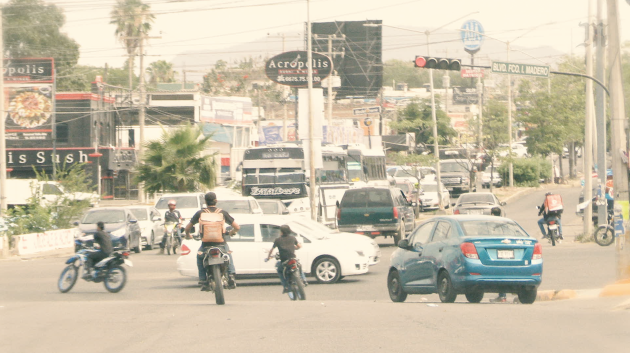[Bertrand Monnet est professeur à l’Edhec (école de commerce), titulaire de la chaire Management des risques criminels. A ce titre, il s’intéresse au cartel de Sinaloa depuis 2014. Il lui a fallu des années pour identifier des intermédiaires capables de garantir à la fois la fiabilité de ses interlocuteurs et sa sécurité. Cette enquête sur le fentanyl, qui a donné lieu à une série vidéo en trois volets diffusée sur Lemonde.fr, a nécessité de nombreux séjours au Mexique et un long travail de mise en confiance. « Les narcos ont accepté de témoigner par volonté d’afficher leur puissance sur la scène internationale », estime le chercheur.]
Culiacan, the stronghold of the Sinaloa Cartel, in northwest Mexico. The Toyota Land Cruiser of Pablo, a driver affiliated with this criminal organization, drives slowly on a major artery of the city. He takes me to a meeting with the leader of an important cartel clan. In the preceding weeks, I was able to observe, within the laboratories themselves, the manufacturing of fentanyl tablets that the “narcos” produce by the tons. We now need to understand how they export this opioid to their main market, the United States.
The leader in question is one of the biggest suppliers to New York traffickers. For him, this interview is risky: he knows to what extent the cartel is under threat from operations by the Mexican army and the Drug Enforcement Agency (DEA, the American anti-drug agency). If he agreed to meet me, it was only at the request of a relative of “El Chapo”, the historic leader of the organization, detained in the United States. Now out of the organization after having served a prison sentence, this “intermediary” retains such moral authority over the narcos that he can facilitate such a meeting.
Before reaching the meeting place – a ranch near Culiacan – you must stop at a safe housea “safe house” located on the outskirts of the city so that punteros, the “lookouts” responsible for following us on motorbikes, check that we are not under police or military surveillance. Suddenly, five motorcycles zoom past us then stop 150 meters further on, in the middle of an intersection, as if to block the lanes.
Other motorcycles come and go around the pickup, like a swarm of wasps, to keep other cars away. The nearest motorcycle sticks to our vehicle and its passenger waves twice quickly with his hand to the right. “There’s a problem, let’s get out,” said Pablo in a calm voice as he passed the punteros posted at the crossroads. “Look, over there, it’s safe house “, he whispers to me while pointing, below the road, to a house in front of which two army Jeep Hummers are stationary, 12.7 mm machine guns in battery on the rear platform. Around ten soldiers are preparing to invade the scene.
You have 85% of this article left to read. The rest is reserved for subscribers.
